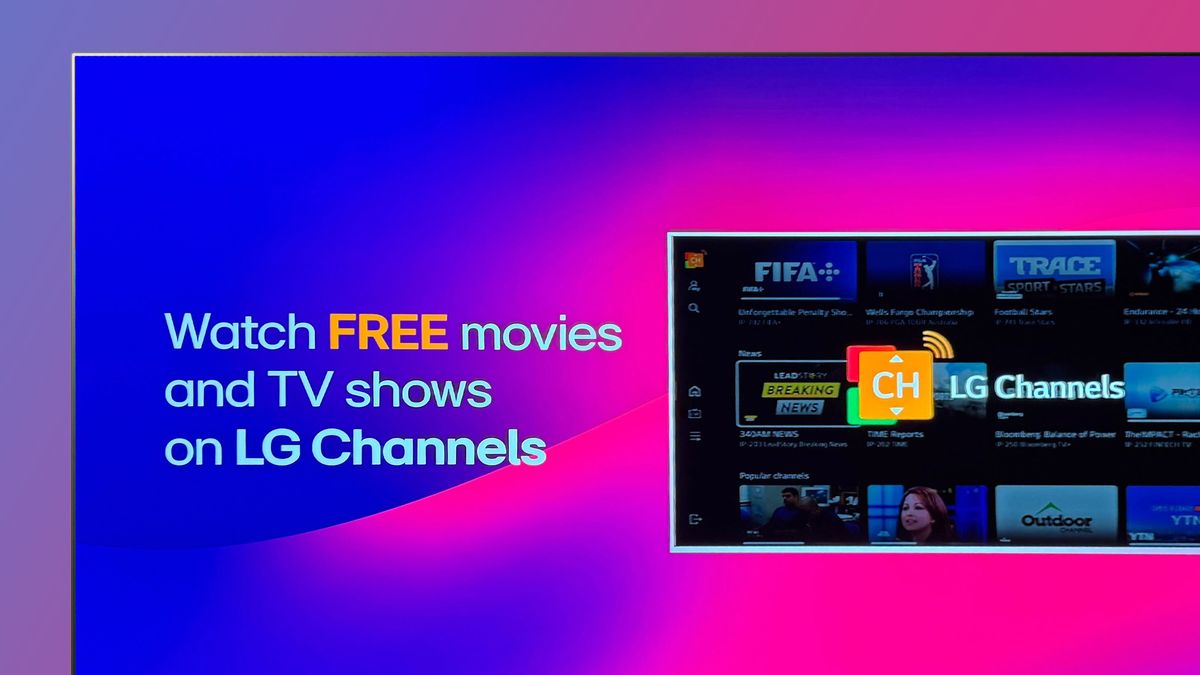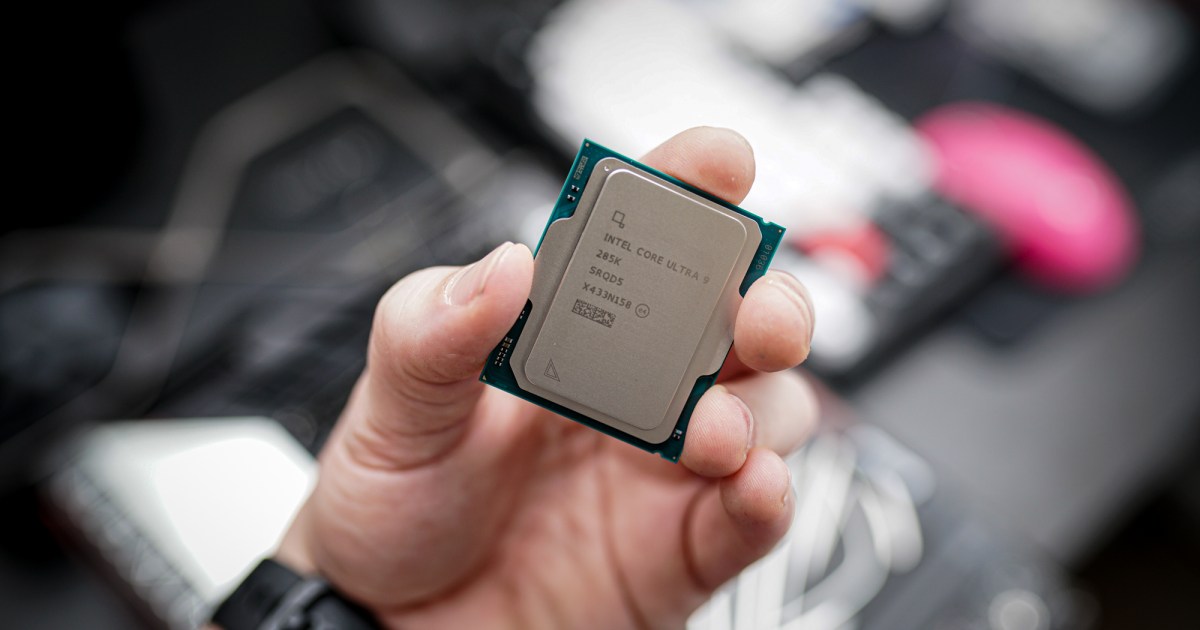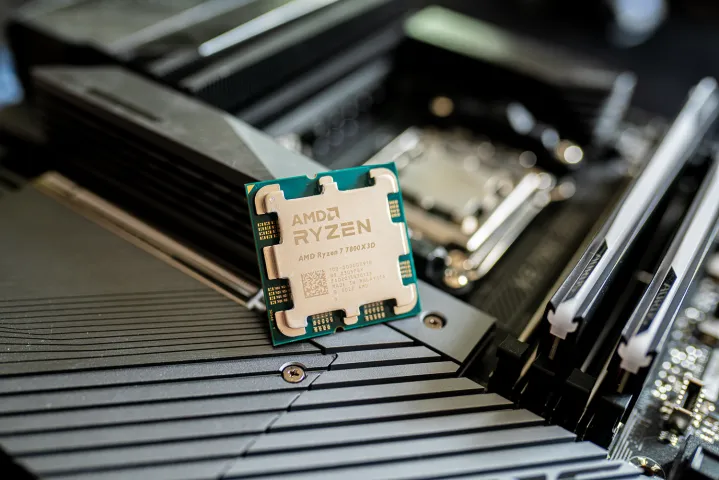Adobe is going all in on generative AI models and tools, even if that means turning away creators who dislike the technology. Artists who refuse to embrace AI in their work are “not going to be successful in this new world without using it,” says Alexandru Costin, vice president of generative AI at Adobe.
Technology
Cabinet approves Rs 1000 crore venture capital fund to boost space sector- The Week

India will get a Rs 1000 crore venture capital fund to boost the space sector. The fund aims to address the need for risk capital, as traditional lenders are hesitant to fund startups in this high-tech sector.
There are nearly 250 space startups emerging across the value chain which may need financial support, the cabinet note said.
This approval was given by the union cabinet on Thursday as part of its 2020 space sector reforms. Under these reforms, the government set up IN-SPACe to promote and oversee private sector participation in space activities.
The officials said the Rs 1000 crore venture capital fund would support the growth of India’s space economy, currently valued at S8.4 billion, with a target to reach $44 billion by 2033.
“The proposed government-backed fund will boost investor confidence, attract private capital, and signal the government’s commitment to advancing space reforms,” the cabinet statement said.
The proposed Rs 1,000 crore VC fund is planned to be up to five years from the actual date of start of the fund operations.
The average deployment amount could be Rs 150-250 crore per year, depending on the investment opportunities and fund requirements.
The government said the fund will create a multiplier effect by attracting additional funding for later-stage development, thereby instilling confidence in private investors along with retention of space companies domiciled within India. This will help counter the trend of Indian companies setting base abroad.
Technology
VW’s Scout EV revival starts with an SUV and a pickup

Though it disappeared over 40 years ago, International Harvester is a mythical brand in North America thanks in part to the Scout, one of the world’s first SUVs. Now, Scout Motors is back under Volkswagen as an all-new marque and just revealed its first two models: the Terra pickup and Traveler SUV. Both use a brand-new EV platform and will start at under $60,000 before incentives when production launches in 2027.
Scout motors says its “priority was to honor the spirit of the original Scout,” sold by International from 1961 to 1980 in various forms. Though the Traveler and Terra clearly have modern designs, they use rounded contours and a “black mask” on the front and rear fascias to invoke the older models. They also come with separate bumpers and upward-sweeping side windows, again reminiscent of the classic Scout.
Other design elements are fully modern, like a thin LED strip around the “grill” and rectangular headlights bisected by slim daytime running lights. (The models shown here are 85 percent of what we’ll see in final production vehicles, Scout said).
The original Scout and International 150 pickup were practical and tough (we called it “Inter-smashable” back in the day), and the new models will keep some of those aspects. Both have body-on-frame construction with a solid rear axle, along with front and rear locking hubs for off-road use. They’ll offer 2,000 pounds of payload along with 7,000 pounds of towing capacity for the Traveler and 10,000 pounds for the Terra pickup. Both will come with all-wheel drive via front and rear electric motors.
That should keep working and outdoorsy buyers happy, but the vehicles can also raise your hairs. Both will accelerate from 0-60 MPH in 3.5 seconds thanks to an estimated 1,000 pound-feet of torque and four-wheel-drive system, though Scout has yet to provide a top speed.
The base trim package will offer up to 350 miles of range while the extended range version is effectively a hybrid that will go up to 500 miles using a gas-powered range extender. Charging times aren’t mentioned, but they’ll use an 800-volt architecture that supports up to 350 kW speeds. It will also feature bidirectional charging and vehicle-to-home capabilities, along with over-the-air updates and remote diagnostics.
The cabin is as far as it can be from the spartan interior on the originals. It looks luxurious and high-tech with a digital cluster and large displays, along with a promised “responsive” infotainment system and high-resolution backup cameras. At the same time, it comes with toggles and dials for climate and other controls. The seats and panels are covered with a mix of brown leather, fabric and a wood-like material.
Both have a frunk with 120-volt and USB-C outlets and can fit golf clubs, a gym bag and a small cooler, Scout says. The Terra’s 5.5-foot bed will also contain a 120- and 240-volt outlets for tools, compressors and the like.
The Traveler, meanwhile, will have a split tailgate and come with two roof options. The first is a Cabana top with panels that fold back for open-air motoring, while the second is a glass roof with a powered shade. Both vehicles will be available with a front bench seat to increase passenger capacity.
Much like Tesla, Scout will sell its vehicles directly to consumers without a dealership in the middle. Purchasing one will take “minutes” with the company promising full price transparency and handling sales, delivery and service. You’ll be able to check them out in person at dedicated “Scout Workshop” retail and service locations.
Both models are designed and engineered in Michigan and will be built at a new factory in Columbia, South Carolina by some 4,000 workers. Production starts in 2027 with vehicles arriving for the 2028 model year. Prices will start under $60,000, according to Scout Motors, and reservations are now open.
Technology
EA Sports FC 25 tops September sales, continues football win streak | Circana

For the third month in a row, a football game has taken the top slot in the U.S. sales charts, according to industry-tracking firm Circana. Granted, the three games represent two different kinds of football — while Madden NFL 25 and EA Sports College Football 25 dominated August and July, respectively, September’s big seller was EA Sports FC 25. Circana reports that the latter also broke a record, having the highest launch month sales of any soccer game released in the U.S.
September 2024 Dollar Sales, Millions Sep
2023Sep
2024Change Total Video Game Sales $4,679 $4,378 -6% Video Game Content (Physical & Digital Full Game, DLC/MTX and Subscription consumer spending across Console, Cloud, Mobile*, Portable, PC and VR platforms) $4,018 $3,910 -3% Video Game Hardware $445 $251 -44% Video Game Accessories $216 $217 1%
However, the picture was not so rosy elsewhere on Circana’s report. Video game hardware sales are still in freefall, while overall sales numbers for the industry are down year-over-year. Mat Piscatella, Circana’s executive producer for games reports, said in a statement, “September video game hardware spending fell 44% when compared to a year ago, to $251 million. This is the lowest monthly hardware spend total for a September month since 2019 ($242 million).”
The sales charts for the year-to-date are not much better, showing that total sales almost flat from September 2023’s chart. While video game content specifically is up 6% YoY, that number is dragged down by the almost 30% decrease from YTD 2023 to YTD 2024. Mobile content spending is up, according to Sensor Tower’s data, but most other stats are down.
Year-to-Date 2024 Dollar Sales, Millions YTD End
Sep 23YTD End
Sep 24Change Total Video Game Sales $40,587 $40,671 0% Video Game Content (Physical & Digital Full Game, DLC/MTX and Subscription consumer spending across Console, Cloud, Mobile*, Portable, PC and VR platforms) $35,138 $36,193 3% Video Game Hardware $3,651 $2,549 -30% Video Game Accessories $1,798 $1,928 7%
There are a few things worth noting from the specific sales results: Circana’s sales show that the Xbox Series X is slightly edging out the Series S in sales, making up 51% of Xbox Series units sold life-to-date. Accessory sales are still holding on, with the PlayStation Portal being the best-selling accessory for the year-to-date — 3% of all PlayStation 5 owners also own a Portal.
Circana September 2024: Top 20 best-selling games in the U.S.
| Rank | Last Month Rank | Title | Publisher |
| 1 | NEW | EA Sports FC 25 | Electronic Arts |
| 2 | NEW | Astro Bot | Sony (Corp) |
| 3 | 1 | Madden NFL 25 | Electronic Arts |
| 4 | NEW | The Legend of Zelda: Echoes of Wisdom* | Nintendo |
| 5 | 2 | EA Sports College Football 25 | Electronic Arts |
| 6 | 3 | Star Wars: Outlaws | Ubisoft |
| 7 | NEW | NBA 2K25* | Take-Two Interactive |
| 8 | 6 | Hogwarts Legacy | Warner Bros. Games |
| 9 | NEW | NHL 25 | Electronic Arts |
| 10 | 29 | God of War: Ragnarok | Sony (Corp) |
| 11 | 502 | Dead Rising | Capcom USA |
| 12 | 144 | Final Fantasy XVI | Square Enix Inc (Corp) |
| 13 | 5 | Elden Ring | Bandai Namco Entertainment |
| 14 | 7 | Minecraft^^ | Multiple Video Game Manufacturers |
| 15 | 8 | Call of Duty: Modern Warfare III (2023) | Microsoft (Corp) |
| 16 | NEW | Marvel vs. Capcom Fighting Collection: Arcade Classics | Capcom USA |
| 17 | 25 | Age of Mythology | Microsoft (Corp) |
| 18 | NEW | Space Marine II [Warhammer 40,000]* | Focus Entertainment |
| 19 | 15 | Ghost of Tsushima | Sony (Corp) |
| 20 | 4 | EA Sports MVP Bundle | Electronic Arts |
^^ Digital sales on Nintendo platforms not included
October’s sales charts contains a high saturation of new games, with seven new games making it into the top 20 slots — five of them in the top 10. The top game is the aforementioned EA Sports FC 25, which beat last year’s EA Sports FC 24 in sales and broke the record for launch month sales for a soccer title. The fact that EA’s soccer title continues to chart well despite the company’s break from the FIFA branding. The game was also the best-selling title on PlayStation and Xbox platforms, and the fifth best-selling title on Nintendo Switch. NBA 2K25 and NHL 25 also bring sports game success, debuting at 7th and 9th place on the charts, respectively.
Sony’s Astro Bot follows FC 24 at second place, and is also the second best-selling game on PlayStation platforms. Nintendo’s new Zelda title, Echoes of Wisdom is the fourth best-selling title and could have been higher, but Circana only has physical sales data for Nintendo products. Space Marine 2 is not only the 18th best-selling title, it was also the third most-played game on Steam during September. The Marvel vs Capcom Fighting Collection: Arcade Classics is the final new game that made the charts with its brand recognition and familiar characters.
Circana’s September 2024 chart might be the most chaotic yet
September’s sales charts contains not only a number of new games, but also a high number of games that have jumped up the charts from a relatively low position. The biggest example of this is Dead Rising, which went from 502nd place to 11th thanks to the Dead Rising Deluxe Remaster. Piscatella clarified on Bluesky that games are tracked by stock-keeping units (SKUs), which means that sales of the remaster count towards the number of the original as well. Age of Mythology appears to have received a similar boost thanks to the launch of its Retold remaster.
Other games that jumped up several places are Final Fantasy XVI and God of War Ragnarok, which launched on PC on September 17 and 19, respectively. The PC launches have boosted the profile of both games, though God of War Ragnarok has weathered some discontent from players for requiring a PSN account in order to run the game.
Circana September 2024: 20 best-selling games of 2024 so far
| Rank | Last Month Rank | Title | Publisher |
| 1 | 1 | EA Sports College Football 25 | Electronic Arts |
| 2 | 2 | Helldivers II | Sony (Corp) |
| 3 | 3 | Call of Duty: Modern Warfare III (2023) | Microsoft (Corp) |
| 4 | 4 | EA Sports MVP Bundle | Electronic Arts |
| 5 | 5 | Elden Ring | Bandai Namco Entertainment |
| 6 | 6 | Dragon’s Dogma II | Capcom USA |
| 7 | 12 | Madden NFL 25 | Electronic Arts |
| 8 | 7 | MLB: The Show 24^ | Multiple Video Game Manufacturers |
| 9 | 8 | WWE 2K24** | Take-Two Interactive |
| 10 | NEW | EA Sports FC 25 | Electronic Arts |
| 11 | 10 | Hogwarts Legacy | Warner Bros. Games |
| 12 | 9 | Final Fantasy VII: Rebirth | Square Enix Inc (Corp) |
| 13 | 11 | Tekken 8 | Bandai Namco Entertainment |
| 14 | 13 | NBA 2K24** | Take-Two Interactive |
| 15 | 14 | Grand Theft Auto V** | Take-Two Interactive |
| 16 | 15 | Madden NFL 24 | Electronic Arts |
| 17 | 17 | Minecraft^^ | Multiple Video Game Manufacturers |
| 18 | 16 | Suicide Squad: Kill the Justice League | Warner Bros. Games |
| 19 | 18 | EA Sports FC 24 | Electronic Arts |
| 20 | 19 | P3: Persona 3: Reload | Sega |
** Jul-Sep Digital sales not included
^^ Digital sales on Nintendo platforms not included
Unlike the September sales charts, the year-to-date charts remain relatively unchanged, albeit slightly remixed. The only September game that made it to this chart was EA Sports FC 25, which also pushed its predecessor EA Sports FC 24 one place down the list. Madden NFL 25 has also gotten a boost up the list with its continued high sales.
Source link
Technology
StrictlyVC joins its first TechCrunch Disrupt

The StrictlyVC series — known for bringing the biggest stories and key players to an audience of VCs, LPs, founders, and operators — is holding its first-ever event at TechCrunch Disrupt 2024. Be at Disrupt in the Deal Flow Cafe on Tuesday, October 29, from 3 p.m. to 6 p.m., located at Moscone West in San Francisco.
This session promises to be an exceptional opportunity for investors. If you’re keen to network with fellow professionals in the investment space, then this is the session to attend. StrictlyVC is exclusive to Disrupt 2024 Investor Pass holders.
This StrictlyVC lineup features leading players in the investment world, prepared to offer their insights to investors attending Disrupt 2024. Without further delay, here is the full agenda for the StrictlyVC session.
The full StrictlyVC lineup at Disrupt 2024
- Aileen Lee, Founder and Managing Partner, Cowboy Ventures
- Alex Pall and Drew Taggart from The Chainsmokers, Co-Founders and Partners, MANTIS Venture Capital
- Beezer Clarkson, Partner, Sapphire Partners
- Jessica Archibald, General Partner, Top Tier Capital Partners
- Nirmal Utwani, Director of Engineering, Growth, Amplitude
- Rick Prostko, Senior Managing Director, Teachers’ Venture Growth, Ontario Teachers’ Pension Plan
- Vlad Voroninski, CEO and Founder, Helm.ai
- Wesley Chan, Co-Founder and Managing Partner, FPV Ventures
Don’t miss out on these investment talks at Disrupt
StrictlyVC events have featured top-tier speakers like VC Katie Haun, Federal Trade Commission chief Lina Khan, and Sam Altman of OpenAI, making them a must-attend for anyone in the industry. Now, for the first time, we’re bringing one of these boutique events to the massive Disrupt conference! Don’t miss your chance to connect with your peers and pick up some valuable insights from the top names in the investment world.
Grab your Investor Pass today and save up to $300. Ticket rates will rise at the door.

Technology
Adobe execs say artists need to embrace AI or get left behind

In an interview with The Verge, Costin said that he “isn’t aware” of any plans for Adobe to launch products that don’t include generative AI for creators who prefer to manually complete tasks or oppose how AI is changing the creative industry.
“We have older versions of our products that don’t use gen AI, but I wouldn’t recommend using them,” Costin said. “Our goal is to make our customers successful, and we think that in order for them to be successful, they need to embrace the tech.”
And according to Adobe’s President of Digital Media, David Wadhwani, the company is unlikely to accommodate creators who think otherwise.
“We’ve always innovated with conviction, and we believe in the conviction of what we’re doing here,” said Wadhwani, acknowledging that some creatives have loudly criticized Adobe’s adoption of generative AI technology. “People will either agree with that conviction or they won’t, but we think our approach is the one that wins frankly in the short term, but certainly in the long term.”
Adobe is in a difficult position — while many of its customers, particularly businesses and large creative teams, are hungry for AI features that can increase productivity, many artists openly detest the technology and fear how it will impact their livelihoods. Given the demand already exists, however, Adobe would be risking its dominant position in the creative software market if it ignored what many customers are asking for. If Adobe doesn’t develop these tools, other companies will, and they may not make the effort to do so in a way that respects artists’ work.
There are also communities of people online who harbor an extreme hatred of AI regardless of how it’s been applied, and will go out of their way to condemn and avoid interacting with it. For example, when a “shot-for-shot” remake of the Princess Mononoke movie trailer made with Kling recently went viral, it was briefly taken offline by its creator following intense backlash from fans of the original Hayao Miyazaki classic who felt the video was disrespectful or outright ugly.
But the generative AI features like those powered by Adobe’s Firefly models are the most adopted products Adobe has ever released, according to Wadhwani, which is all the signal the company needs to continue on the same path. There are plenty of generative AI models that already compete with Adobe’s Firefly lineup, from both heavy hitters like OpenAI and Google, and smaller niche startups that are trying to carve out their own place in the industry. And in many cases, Adobe is the one playing catch up. The forthcoming “Project Concept” collaborative canvas, which also includes text-to-image tools and an AI remixing feature, is similar to existing apps like Figma’s FigJam and Kaiber’s Superstudio, for example.
Adobe says it aims to implement AI in a way that gives artists more time to focus on actually being creative rather than replacing them entirely, such as making tools more efficient and removing tedious tasks like resizing or masking objects. The company is essentially trying to appeal to both sides by giving its AI tools very specific purposes inside its Creative Cloud applications, rather than pitching them as a means to replace every aspect of content creation.
“If you just rely on AI for all this stuff, you’re going to end up with a lot more content that looks like the same content everyone else is making.”
“We think that demand for content is insatiable. We also think that human creativity will be a critical part of it,” said Wadhwani. “If you just rely on AI for all this stuff, you’re going to end up with a lot more content that looks like the same content everyone else is making.”
What we’re likely to see is a greater divide between smaller artists and the wider creative industry. The demand for effectively every kind of content, from images and copy for advertising, to the TV shows and other media we consume, is growing rapidly. An Adobe survey reports that it increased two-fold between 2021-2023, and could increase up to 2000 percent by 2025, which is pushing companies to find new ways to affordably increase production.
Generative AI tools — many of which promise to automate repetitive or technically challenging tasks — are a highly appealing solution to meet such demands. But plenty of people still value the work that goes into manual creative processes, and I don’t see that going away entirely.
“I think there will be a thirst for artists who do things by hand,” said Wadhwani. “In the last decade I can take a picture and run it through a process that makes it look like a painting, but I’m not going to value that ‘painting’ the same way I would an artist who actually took the time to make a real painting.”
There’s little doubt that generative AI is changing the creative landscape though. Adobe says the technology will create new jobs, but those jobs will be different, and some specialized roles may disappear entirely. It’s also just difficult to avoid AI art generally these days — platforms like Etsy that were created for creators to sell hand-made wares are now inundated with it, and it’s harder for artists to find exposure online now they have to compete with AI content farms.
Adobe is the dominant provider of creative design software and few other companies provide a similarly connected ecosystem of products. That makes it hard for customers to simply jump ship if they don’t agree with the direction it’s taking, even if it is trying to be considerate about how generative AI is being implemented. But if its endorsement of AI ruffles enough feathers, then that could give way for new competitors to appease the users that Adobe is leaving behind.
And if the backlash presented by online creators is any indication, that’s a sizable market that Adobe is at risk of losing. It seems Adobe just thinks the opportunity that AI adopters present is even larger.
Technology
Your older LG OLED TV will soon be cursed with screensaver ads – here’s how to banish them

It’s already pretty hard to avoid being bombarded with TV ads, whether you’re watching Prime Video or pausing YouTube – and LG is now making things a little worse by bringing its pesky screensaver ads to older OLED TV models.
Last month, we reported that recent LG TVs, including premium OLEDs, were sneakily starting to show screensaver ads after sets had been left idle for a while. Some testing on our own LG G4 confirmed that to be the case. Now, FlatpanelsHD is reporting that those ads are rolling out to older models dating back to 2020, too.
If you own LG models like the LG GX OLED (2020), LG B1 OLED (2021) or LG B2 OLED (2022), you could soon see the screensaver ads turned on by default. It seems they’re also spreading to more recent models like the LG C4 OLED (2024), which is galling considering we consider it to otherwise be one of the best TVs you can buy.
Currently, the full-screen ads appear to be largely LG-related, promoting LG’s own channels. But an article from LG Ad Solutions previously suggested they could eventually be expanded to include third-party ones – and there’s evidence on Reddit that this might already be happening. Fortunately, there is a way to turn them off…
How to turn them off

There is currently a simple way to remove the default screensaver ads on your LG TV. Just go to Settings > General > System Settings > Additional Settings, then scroll down to the unsubtly-named Screen Saver Promotion. Toggle this off and you’ll be spared any more unsavory promos when your TV is idle.
Hopefully, this option will remain in the menus of LG TVs, because watching actual TV shows is quickly becoming a sideshow to being blasted with ads on many streaming platforms.
Earlier this month, the Financial Times reported that ads on Prime Video would “ramp up a little bit more into 2025” (according to Head of Prime Video International, Kelly Day). That follows the streaming service asking viewers to pay an extra $2.99/£2.99 a month to be spared from ads earlier this year.
But Prime Video and LG are far from alone, with YouTube recently introducing pause screen ads and Roku delivering Instagram-style shoppable ads to smart TVs. Let’s just hope the best smart glasses like the Meta Ray-Bans don’t start getting similar ideas.
You might also like
Technology
Intel Core Ultra 9 285K vs. Ryzen 7 7800X3D

Intel’s new Core Ultra 9 285K is finally here, promising a boost in performance with a significant reduction in power requirements, at least according to Intel. As you can read in my Core Ultra 9 285K review, Intel’s performance claims aren’t as rosy as reality, especially when stacked up against what is unequivocally the best processor for gaming you can buy: AMD’s Ryzen 7 7800X3D.
I threw both processors on the test bench to pit them head-to-head, looking at performance across productivity and gaming apps, as well as thermals and efficiency. These CPUs target different users, but there are still a lot of interesting comparisons we can look at between them.
Specs

The Core Ultra 9 285K and Ryzen 7 7800X3D are radically different CPUs, and that becomes clear when you compare their specs directly. Although it’s generally not a good idea to compare specs between two CPUs in the same class, the gap in specs here is so large that we can make some interesting observations. The main thing that’s different between the two CPUs is core count.
The Ryzen 7 7800X3D is a fairly straightforward chip in that regard. It comes with eight Zen 4 cores and a total of 16 threads, and it can boost up to 5GHz. That’s not what’s interesting about the CPU. It’s the 104MB of cache packed on top of the CPU die, split between 8MB of L2 cache and 96MB of L3 cache thanks to AMD’s 3D V-Cache packaging tech.
| Core Ultra 9 285K | Ryzen 7 7800X3D | |
| Cores/Threads | 24/24 (8P+16E) | 8/16 |
| Boost clock speed | 5.7GHz | 5GHz |
| Base clock speed | 3.7GHz | 4.2GHz |
| Cache (L2 + L3) | 76MB | 104MB |
| TDP | 250W | 120W |
| Price | $589 | $450 |
The Core Ultra 9 285K doesn’t have any fancy 3D V-Cache, but it still has a few tricks of its own. It’s a 24-core CPU, but unlike the Ryzen 7 7800X3D, it doesn’t come with simultaneous multi-threading (SMT). Each core only has a single thread. In addition, Intel uses its hybrid architecture, mixing together the Lion Cove P-core design with the Skymont E-core design. According to Intel, the E-cores are the main performance drivers here, unlike with the Core i9-14900K, where the E-cores were relatively weak.
With more cores and higher clock speeds, it shouldn’t come as a surprise that the Core Ultra 9 285K has much higher power requirements. I’ll address efficiency directly a bit lower down in this comparison, but I can tell you now that, under a full load, the Core Ultra 9 285K indeed draws twice as much (or more) power than the Ryzen 7 7800X3D — though usually with much better performance.
Pricing

The Core Ultra 9 285K and Ryzen 7 7800X3D force you to think about pricing because, depending on what you’re using your PC for, you can save quite a bit of money. The Core Ultra 9 285K is newer, and it’s the flagship chip from Intel’s latest range, so you’ll spend $589 if you want to pick it up now. The price will drop over time — the Core i9-14900K is about $450 a year after releasing — but until we see the next generation from Intel, you can expect to spend over $500.
The Ryzen 7 7800X3D is much cheaper at $450, though I’ve seen some strange price shifts with the CPU over the past several months. Just a few weeks before publishing this comparison, the Ryzen 7 7800X3D was sold out everywhere, and prior to that, you could commonly find it for around $320. Now, at the time of publishing, you’ll find it between $450 and $500, but I expect the price will drop very soon.
AMD has confirmed that its next-gen 3D V-Cache CPU is arriving on November 7, so depending on when you’re reading this, make sure to check in on the price of the Ryzen 7 7800X3D. If the new CPU is out by then, I expect we’ll see the price drop to around $350 to $400.
Even with its higher price, the Ryzen 7 7800X3D is significantly cheaper than the Core Ultra 9 285K — $139 cheaper, at least, and close to $239 cheaper if the Ryzen 7 7800X3D drops in price.
Productivity performance

Here’s some quick proof that the Core Ultra 9 285K and Ryzen 7 7800X3D are in completely different weight classes. As you can see from Cinebench R24 above, the Core Ultra 9 285K is much faster than the Ryzen 7 7800X3D — it’s not even close. Intel says this CPU is particularly strong in a ray-traced renderer line Cinebench, but even if you dropped 10% or 15% of the performance from the Core Ultra 9 285K, it would still be miles ahead of the Ryzen 7 7800X3D.

For more of a mixed-use benchmark, take a look at Geekbench 6. The Core Ultra 9 285K still runs away with multi-core performance, but the single-core delta is much smaller. And despite the clear lead in multi-core performance, that gap is smaller, too. Throughout my testing, one thing became clear — the Core Ultra 9 285K is really fast in certain applications, but that performance doesn’t apply everywhere.

A great example of that is Photoshop. You’d assume that the raw multi-core advantage of the Core Ultra 9 285K would mean it obviously wins against the Ryzen 7 7800X3D, but that’s not the case. In fact, the Ryzen 7 7800X3D is faster in Photoshop based on my testing. That’s not good considering the price and spec gap between these two CPUs. You’d expect the Core Ultra 9 285K to mop the floor with the Ryzen 7 7800X3D across all productivity applications.

In Premiere Pro, the Core Ultra 9 285K reclaims a dominant spot, but it really shouldn’t be this close. Not only is the Core Ultra 9 285K a much more capable CPU, it also has access to QuickSync in Premiere Pro, which speeds up performance significantly. The fact that these two CPUs are even competitive in Premiere shows how the performance of the Core Ultra 9 285K can be disappointing in certain apps.
Gaming performance

Gaming performance is where we see a more consistent divergence. The Ryzen 7 7800X3D crushes. Across the 10 games I tested, the Ryzen 7 7800X3D didn’t lose a single one. Sometimes it’s only showing a minor performance improvement, but in games like F1 22 and Cyberpunk 2077, the Ryzen 7 7800X3D provides a transformative uplift in gaming performance.
Not all games respond well to the additional cache on the Ryzen 7 7800X3D. As you can see from titles like Assassin’s Creed Mirage and Black Myth: Wukong, there’s some other factor limiting the performance of the processor — in most cases, your graphics card. However, other games can leverage the additional cache in quite a big way, as shown off by Final Fantasy XIV, Tiny Tina’s Wonderlands, and even Red Dead Redemption 2.
For the Core Ultra 9 285K, it can only hope to match the Ryzen 7 7800X3D, and in most games, it’s not even close to doing that. If you’re focused mainly on gaming, there’s really no contest here. The Ryzen 7 7800X3D absolutely crushes the Core Ultra 9 285K, and it’s significantly cheaper.
Thermals and efficiency

Another area where the Ryzen 7 7800X3D leads is efficiency. It not only has much lower rated power, it can also deliver higher performance in games while consuming less power. You can see that in action in the chart above. Looking solely at peak power draw during these games, the Ryzen 7 7800X3D stayed much more efficient under a heavy workload.
That’s not be critical of Intel. As you can see from the Core i9-14900K, Intel made massive efficiency improvements this generation, and it’s often able to deliver similar performance under 100 watts. But it’s still more power than the Ryzen 7 7800X3D, which rarely goes above 50 watts in games.

Temperature is a different story. On average, the Core Ultra 9 285K was a bit cooler than the Ryzen 7 7800X3D while playing games. It’s not a massive difference, but I tested with a 360mm all-in-one liquid cooler. In a small form factor PC, those temperature differences can really add up, and the Core Ultra 9 285K is set up to handle a more thermally constrained environment better.
It’s important to remember the design of 3D V-Cache CPUs. The cache is stacked directly on top of the cores, serving as an insolating layer between the cores and the integrated heat spreader (IHS). That’s why the Ryzen 7 7800X3D, and other 3D V-Cache CPUs, tend to run a bit hotter and why they aren’t unlocked for overclocking.
The gaming king reigns supreme

There’s really no contest here if you’re a gamer — the Ryzen 7 7800X3D is the way to go. It’s much faster, and it’s cheaper, and although productivity performance lags, the CPU still puts up a surprisingly impressive fight in apps like Premiere Pro and Photoshop.
The natural counter to that is productivity performance. If that’s what you care about, the Core Ultra 9 285K is the way to go. However, the inconsistent performance I saw with Intel’s latest CPU is worth keeping in mind. If you want good productivity performance and gaming in equal stride, I’d push you toward Intel’s Core i9-14900K or AMD’s latest Ryzen 9 9950X instead, the former of which is available for around $450.
-

 Technology4 weeks ago
Technology4 weeks agoIs sharing your smartphone PIN part of a healthy relationship?
-

 Science & Environment1 month ago
Science & Environment1 month agoHow to unsnarl a tangle of threads, according to physics
-

 Science & Environment1 month ago
Science & Environment1 month agoHyperelastic gel is one of the stretchiest materials known to science
-

 Science & Environment1 month ago
Science & Environment1 month ago‘Running of the bulls’ festival crowds move like charged particles
-

 Science & Environment1 month ago
Science & Environment1 month agoMaxwell’s demon charges quantum batteries inside of a quantum computer
-

 Technology1 month ago
Technology1 month agoWould-be reality TV contestants ‘not looking real’
-

 Science & Environment4 weeks ago
Science & Environment4 weeks agoX-rays reveal half-billion-year-old insect ancestor
-

 Science & Environment1 month ago
Science & Environment1 month agoSunlight-trapping device can generate temperatures over 1000°C
-

 Science & Environment1 month ago
Science & Environment1 month agoLiquid crystals could improve quantum communication devices
-

 Technology4 weeks ago
Technology4 weeks agoUkraine is using AI to manage the removal of Russian landmines
-

 TV3 weeks ago
TV3 weeks agoসারাদেশে দিনব্যাপী বৃষ্টির পূর্বাভাস; সমুদ্রবন্দরে ৩ নম্বর সংকেত | Weather Today | Jamuna TV
-

 Science & Environment1 month ago
Science & Environment1 month agoQuantum ‘supersolid’ matter stirred using magnets
-

 Science & Environment1 month ago
Science & Environment1 month agoLaser helps turn an electron into a coil of mass and charge
-

 News3 weeks ago
News3 weeks agoMassive blasts in Beirut after renewed Israeli air strikes
-

 Football3 weeks ago
Football3 weeks agoRangers & Celtic ready for first SWPL derby showdown
-

 Technology3 weeks ago
Technology3 weeks agoSamsung Passkeys will work with Samsung’s smart home devices
-

 News3 weeks ago
News3 weeks ago▶ Hamas Spent $1B on Tunnels Instead of Investing in a Future for Gaza’s People
-

 Science & Environment1 month ago
Science & Environment1 month agoA new kind of experiment at the Large Hadron Collider could unravel quantum reality
-

 Womens Workouts1 month ago
Womens Workouts1 month ago3 Day Full Body Women’s Dumbbell Only Workout
-

 Business3 weeks ago
Business3 weeks agoWhen to tip and when not to tip
-

 MMA3 weeks ago
MMA3 weeks ago‘Uncrowned queen’ Kayla Harrison tastes blood, wants UFC title run
-

 Sport3 weeks ago
Sport3 weeks agoBoxing: World champion Nick Ball set for Liverpool homecoming against Ronny Rios
-

 News3 weeks ago
News3 weeks agoNavigating the News Void: Opportunities for Revitalization
-

 Science & Environment1 month ago
Science & Environment1 month agoPhysicists have worked out how to melt any material
-

 Science & Environment1 month ago
Science & Environment1 month agoWhy this is a golden age for life to thrive across the universe
-

 Science & Environment1 month ago
Science & Environment1 month agoQuantum forces used to automatically assemble tiny device
-

 Technology4 weeks ago
Technology4 weeks agoMicrophone made of atom-thick graphene could be used in smartphones
-

 Sport3 weeks ago
Sport3 weeks agoMan City ask for Premier League season to be DELAYED as Pep Guardiola escalates fixture pile-up row
-
Business3 weeks ago
DoJ accuses Donald Trump of ‘private criminal effort’ to overturn 2020 election
-

 MMA3 weeks ago
MMA3 weeks agoPereira vs. Rountree prediction: Champ chases legend status
-

 News3 weeks ago
News3 weeks ago‘Blacks for Trump’ and Pennsylvania progressives play for undecided voters
-

 Sport3 weeks ago
Sport3 weeks agoWales fall to second loss of WXV against Italy
-

 News1 month ago
News1 month ago▶️ Hamas in the West Bank: Rising Support and Deadly Attacks You Might Not Know About
-

 Science & Environment1 month ago
Science & Environment1 month agoITER: Is the world’s biggest fusion experiment dead after new delay to 2035?
-

 Science & Environment1 month ago
Science & Environment1 month agoA slight curve helps rocks make the biggest splash
-

 Technology1 month ago
Technology1 month agoMeta has a major opportunity to win the AI hardware race
-

 MMA3 weeks ago
MMA3 weeks agoDana White’s Contender Series 74 recap, analysis, winner grades
-

 Sport3 weeks ago
Sport3 weeks agoAaron Ramsdale: Southampton goalkeeper left Arsenal for more game time
-

 MMA3 weeks ago
MMA3 weeks agoJulianna Peña trashes Raquel Pennington’s behavior as champ
-

 Technology3 weeks ago
Technology3 weeks agoMusk faces SEC questions over X takeover
-

 Football3 weeks ago
Football3 weeks agoWhy does Prince William support Aston Villa?
-

 Science & Environment1 month ago
Science & Environment1 month agoNerve fibres in the brain could generate quantum entanglement
-

 Science & Environment1 month ago
Science & Environment1 month agoHow to wrap your mind around the real multiverse
-

 Science & Environment1 month ago
Science & Environment1 month agoNuclear fusion experiment overcomes two key operating hurdles
-

 Technology4 weeks ago
Technology4 weeks agoRussia is building ground-based kamikaze robots out of old hoverboards
-

 Science & Environment1 month ago
Science & Environment1 month agoTime travel sci-fi novel is a rip-roaringly good thought experiment
-

 Technology1 month ago
Technology1 month agoWhy Machines Learn: A clever primer makes sense of what makes AI possible
-

 Technology3 weeks ago
Technology3 weeks agoThis AI video generator can melt, crush, blow up, or turn anything into cake
-

 Sport3 weeks ago
Sport3 weeks agoSturm Graz: How Austrians ended Red Bull’s title dominance
-

 News3 weeks ago
News3 weeks agoFamily plans to honor hurricane victim using logs from fallen tree that killed him
-

 Sport3 weeks ago
Sport3 weeks agoChina Open: Carlos Alcaraz recovers to beat Jannik Sinner in dramatic final
-

 Money3 weeks ago
Money3 weeks agoWetherspoons issues update on closures – see the full list of five still at risk and 26 gone for good
-

 Technology3 weeks ago
Technology3 weeks agoThe best budget robot vacuums for 2024
-

 News1 month ago
News1 month ago▶️ Media Bias: How They Spin Attack on Hezbollah and Ignore the Reality
-

 Technology3 weeks ago
Technology3 weeks agoGmail gets redesigned summary cards with more data & features
-
Business3 weeks ago
Sterling slides after Bailey says BoE could be ‘a bit more aggressive’ on rates
-

 Technology3 weeks ago
Technology3 weeks agoMicrosoft just dropped Drasi, and it could change how we handle big data
-

 MMA3 weeks ago
MMA3 weeks agoPereira vs. Rountree preview show live stream
-

 Sport3 weeks ago
Sport3 weeks agoCoco Gauff stages superb comeback to reach China Open final
-

 Entertainment3 weeks ago
Entertainment3 weeks agoNew documentary explores actor Christopher Reeve’s life and legacy
-

 Sport4 weeks ago
Sport4 weeks agoWorld’s sexiest referee Claudia Romani shows off incredible figure in animal print bikini on South Beach
-

 Technology3 weeks ago
Technology3 weeks agoEpic Games CEO Tim Sweeney renews blast at ‘gatekeeper’ platform owners
-
Business3 weeks ago
Bank of England warns of ‘future stress’ from hedge fund bets against US Treasuries
-

 Business3 weeks ago
Business3 weeks agoChancellor Rachel Reeves says she needs to raise £20bn. How might she do it?
-

 News3 weeks ago
News3 weeks agoWoman who died of cancer ‘was misdiagnosed on phone call with GP’
-

 Technology3 weeks ago
Technology3 weeks agoTexas is suing TikTok for allegedly violating its new child privacy law
-

 Technology3 weeks ago
Technology3 weeks agoThe best shows on Max (formerly HBO Max) right now
-

 Sport3 weeks ago
Sport3 weeks ago2024 ICC Women’s T20 World Cup: Pakistan beat Sri Lanka
-

 Science & Environment3 weeks ago
Science & Environment3 weeks agoMarkets watch for dangers of further escalation
-

 MMA3 weeks ago
MMA3 weeks agoAlex Pereira faces ‘trap game’ vs. Khalil Rountree
-

 News3 weeks ago
News3 weeks agoGerman Car Company Declares Bankruptcy – 200 Employees Lose Their Jobs
-

 MMA3 weeks ago
MMA3 weeks agoUFC 307 preview show: Will Alex Pereira’s wild ride continue, or does Khalil Rountree shock the world?
-

 MMA3 weeks ago
MMA3 weeks ago‘I was fighting on automatic pilot’ at UFC 306
-

 MMA3 weeks ago
MMA3 weeks agoKetlen Vieira vs. Kayla Harrison pick, start time, odds: UFC 307
-
News1 month ago
the pick of new debut fiction
-

 News1 month ago
News1 month agoOur millionaire neighbour blocks us from using public footpath & screams at us in street.. it’s like living in a WARZONE – WordupNews
-

 Football3 weeks ago
Football3 weeks agoSimo Valakari: New St Johnstone boss says Scotland special in his heart
-

 Technology3 weeks ago
Technology3 weeks agoJ.B. Hunt and UP.Labs launch venture lab to build logistics startups
-

 News3 weeks ago
News3 weeks agoHull KR 10-8 Warrington Wolves – Robins reach first Super League Grand Final
-

 Technology3 weeks ago
Technology3 weeks agoOpenAI secured more billions, but there’s still capital left for other startups
-
Business3 weeks ago
Head of UK Competition Appeal Tribunal to step down after rebuke for serious misconduct
-
Business3 weeks ago
The search for Japan’s ‘lost’ art
-

 Business3 weeks ago
Business3 weeks agoStark difference in UK and Ireland’s budgets
-

 News3 weeks ago
News3 weeks agoBalancing India and China Is the Challenge for Sri Lanka’s Dissanayake
-

 News3 weeks ago
News3 weeks agoHeavy strikes shake Beirut as Israel expands Lebanon campaign
-

 TV3 weeks ago
TV3 weeks agoLove Island star sparks feud rumours as one Islander is missing from glam girls’ night
-

 TV3 weeks ago
TV3 weeks agoPhillip Schofield accidentally sets his camp on FIRE after using emergency radio to Channel 5 crew
-

 News3 weeks ago
News3 weeks agoHeartbreaking end to search as body of influencer, 27, found after yacht party shipwreck on ‘Devil’s Throat’ coastline
-

 Technology3 weeks ago
Technology3 weeks agoPopular financial newsletter claims Roblox enables child sexual abuse
-

 Technology3 weeks ago
Technology3 weeks agoApple iPhone 16 Plus vs Samsung Galaxy S24+
-

 TV3 weeks ago
TV3 weeks agoMaayavi (මායාවී) | Episode 23 | 02nd October 2024 | Sirasa TV
-
Politics3 weeks ago
Rosie Duffield’s savage departure raises difficult questions for Keir Starmer. He’d be foolish to ignore them | Gaby Hinsliff
-

 Health & fitness3 weeks ago
Health & fitness3 weeks agoNHS surgeon who couldn’t find his scalpel cut patient’s chest open with the penknife he used to slice up his lunch
-

 Money3 weeks ago
Money3 weeks agoPub selling Britain’s ‘CHEAPEST’ pints for just £2.60 – but you’ll have to follow super-strict rules to get in
-

 Technology3 weeks ago
Technology3 weeks agoIf you’ve ever considered smart glasses, this Amazon deal is for you
-

 News3 weeks ago
News3 weeks agoLiverpool secure win over Bologna on a night that shows this format might work
-

 Technology3 weeks ago
Technology3 weeks agoAmazon’s Ring just doubled the price of its alarm monitoring service for grandfathered customers
-

 Technology3 weeks ago
Technology3 weeks agoHow to disable Google Assistant on your Pixel Watch 3
-
Business3 weeks ago
Can liberals be trusted with liberalism?
-

 Technology3 weeks ago
Technology3 weeks agoA very underrated horror movie sequel is streaming on Max


You must be logged in to post a comment Login